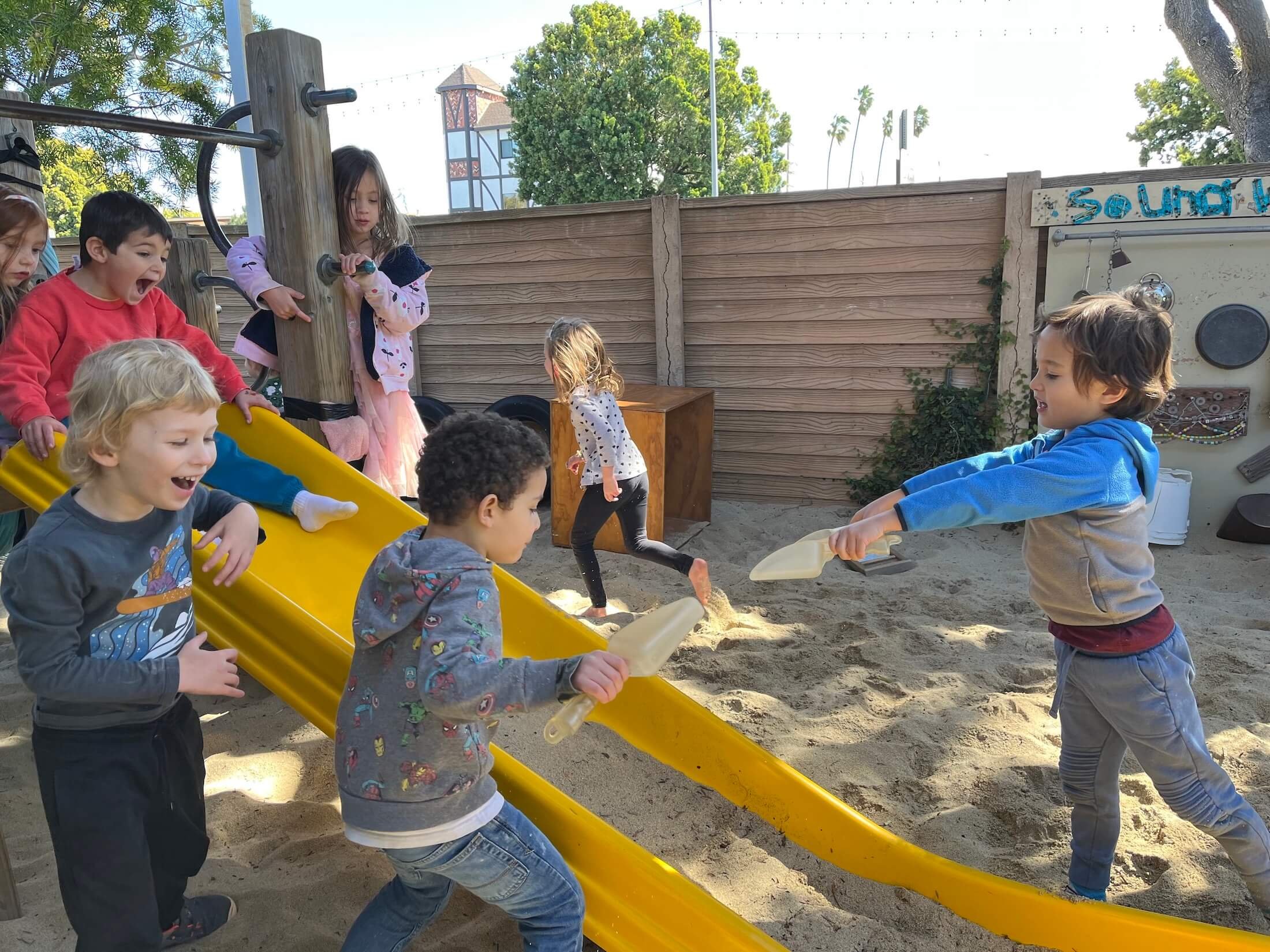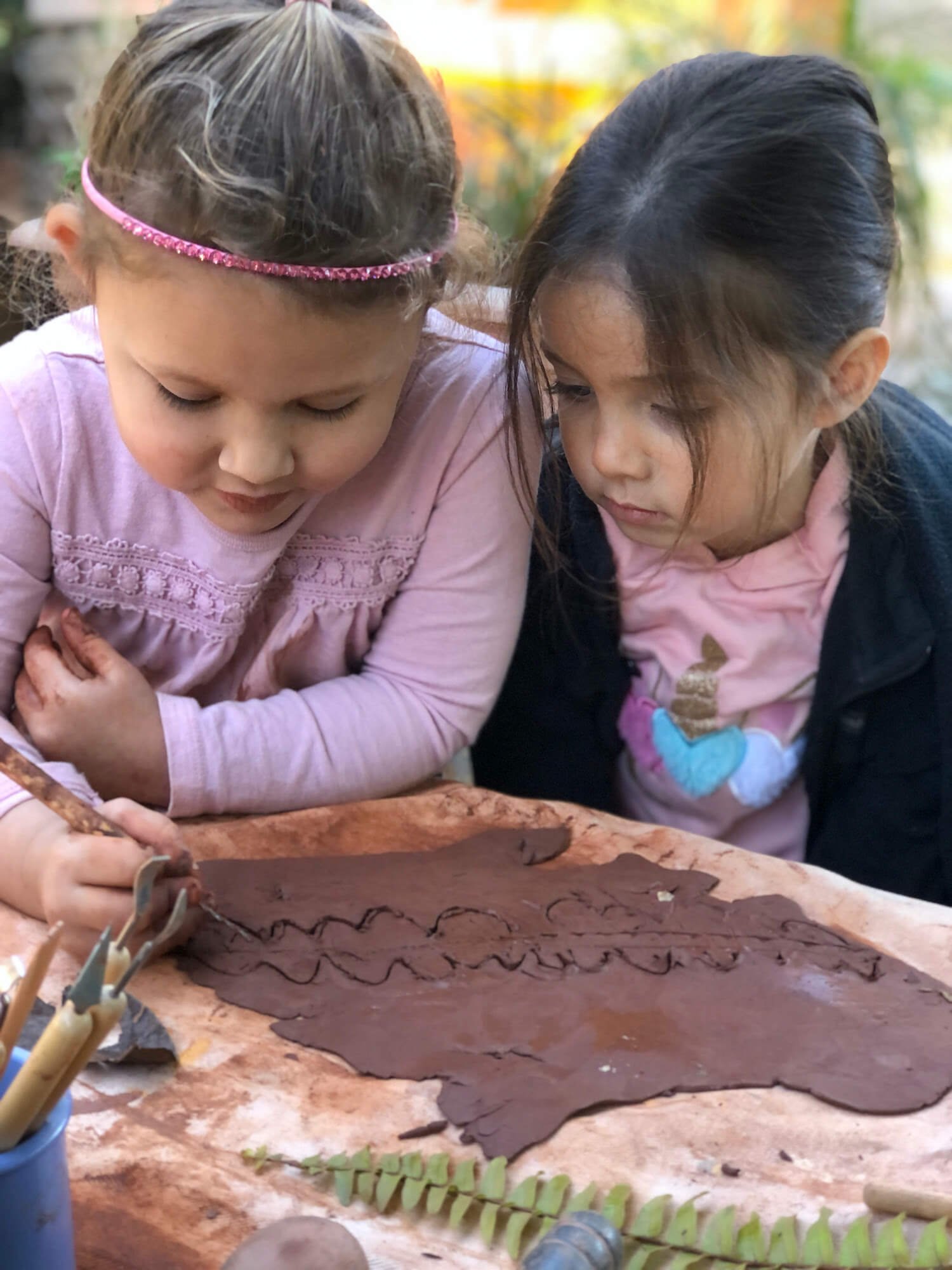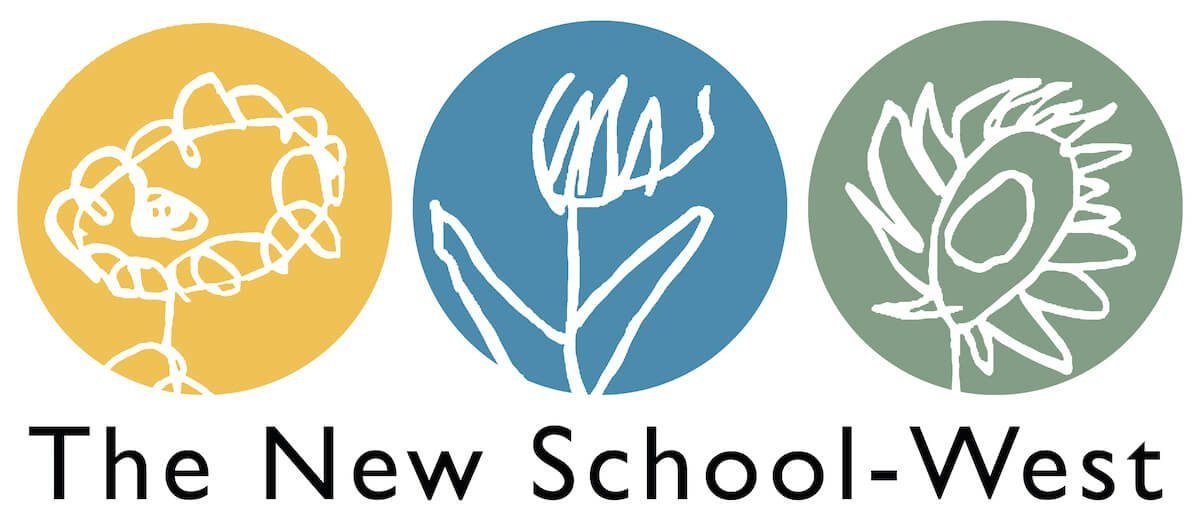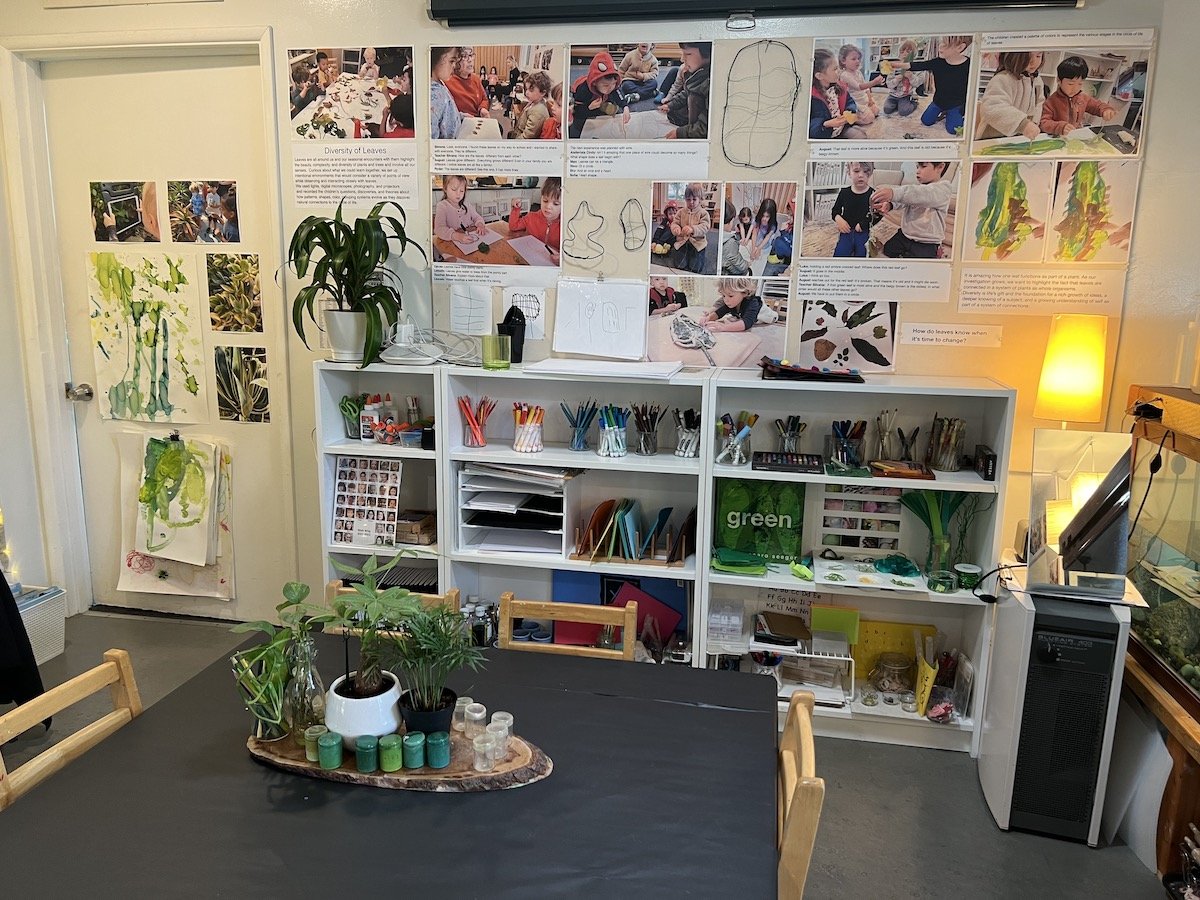
ABOUT NSW
The New School-West (NSW) is a Reggio Emilia-inspired private preschool in West Los Angeles where children learn through hands-on exploration and collaboration. Our curriculum nurtures creativity, independence, and problem-solving, guided by the belief that every child is capable and curious.
We serve children ages 3 to 5 years old with part time programs as well as full time programs. We welcome everyone and are committed to a community that is free of bias and discrimination based on race, creed, religion, sex, gender expression, national origin, or abilities.
By working with our families, our goal is to provide the safety net necessary to support each child’s right to identify and express their feelings and develop the skills to problem solve collaboratively with peers. To do this effectively, we must be aware of the importance of recognizing behaviors and determining what they mean instead of labeling children with adjectives that judge them rather than support them. Because we place such importance on this, we offer a variety of parent gatherings to help connect us in a united philosophy of modeling positive interactions with each other. Through our modeling, the children will learn to care for and respect each other as well as themselves.
With a curriculum that is meaningful to them, children develop an understanding of concepts about themselves, others, and the world around them. They can seek solutions to concrete problems through observation and interaction with people and real objects.

History
Founded in 1987 by Roleen Heimann and Happy Juma, NSW has followed the guidelines of the National Association for the Education of Young Children (NAEYC) since our beginning. NAEYC believes that through a nurturing, high quality early childhood education (ECE) program, each child can grow socially, emotionally, physically, cognitively and creatively. Our studies inform us that although we are all created equal, our society does not treat us equally and so we embrace racial and identity development in equal importance to our physical, intellectual, or emotional development.
Since 1998, we’ve been learning about the preschools in Reggio Emilia, Italy, and have been very inspired by their values that speak to the importance of really understanding what children are asking us, creating environments that support their curiosity and valuing the involvement of teachers, parents, and community in the process. The Reggio Approach has us slowing down to observe, listen, reflect and find meaning in everything we do.
In 2000, we joined the North American Reggio Emilia Alliance (NAREA) which is a member of the Reggio Children International Network. NAREA is a diverse community of advocates and educators actively promoting and defending the rights of children, families and teachers of all cultures through a collaboration of colleagues inspired by the Reggio Emilia experience. Click here to learn more about NAREA
Click here to read more about our history since our beginnings. From Innovations in Early Education: The International Reggio Emilia Exchange, 31,2, Summer 2024. Published by NAREA
























The Values of the Reggio Approach
I’ve been reading and studying about the Values of the Reggio Approach since 1998 when I started teaching at Santa Monica College and still every day, I am touched by this deep, meaningful work. My first real “light bulb” moment happened in 2002 when I had the opportunity to attend a study tour in Reggio Emilia, Italy. It was life changing for me. The “this can’t be done” became “there are endless possibilities” and I truly understood what it meant to be a lifelong learner. I could finally relieve myself from the heaviness of thinking that, as a teacher, I had to know all the answers and we could all, children and adults, be learning alongside each other as co-constructors of knowledge. Below is a brief introduction to the Values of the Reggio Approach that continues to inspire our work here at The New School-West.
xx Roleen
-
Children come into this world as curious, competent, and capable learners. They are natural theory makers and continuously construct and co-construct their own foundation of knowledge. This is very different from our thinking that children are empty sponges ready to be filled up. They are, indeed, full when they enter this world and it is our job to find out what the children know, what they want to know, and provide the opportunities to support their extended learning. We value their ideas. Too often people devalue what children say and do. We call them “cute” and giggle at things they say disregarding their intentions as they put their thoughtful ideas together. We must learn to value “Mistakes” as a powerful learning process. Reflecting on what children say has us understanding what they are trying to figure out. It is only with this listening, do we really “get them”. This is our first “check in”. How do we see children in this world? What is our Image of the Child?
-
The educators’ job is not “to teach” but to support an environment for learning. As researchers and guides, the teachers nurture and support the child’s construction of ideas by facilitating the children’s exploration of their theories with short- and long-term projects, and guiding experiences of joint, open-ended discovery and problem solving. They do this by observing children working and playing together. What are their interests? What are they wanting to know more about? What are they really telling us? Teachers work in teams to support small group work and do not use a predefined curriculum calendar. To know how to plan and proceed with their work, teachers listen and observe children closely and from their observations and notes, they share strategies together and make plans to support the children’s extended learning.
-
Learning is made visible to parents, teachers, children, and visitors in the classroom via notetaking, photos, and videos to further understand our work in support of observation and reflection. Careful consideration and attention are given to the presentation of the thinking of the children and the adults together. The documentation serves many purposes. It connects parents, teachers, visiting educators, and children to what is happening in the classroom. It provides the groundwork for exchanging ideas with each other as a community of learners and it gives the teachers the means to better understand the thinking that extends the work in the classroom. Documentation also honors each child by valuing the work they do together in a social setting.
-
Children have a right to have time to work through their ideas to truly construct and co-construct together, to understand their foundation for knowledge. Knowing this, it is crucial to look at our daily schedules and make the necessary adjustments that allow for more unscheduled time for children to complete their ideas and thoughts. We also look at the spaces in our classrooms. Do they encourage communication, relationships, and autonomy? Do children know what to do without constantly having the teacher direct or redirect them? In the classrooms inspired by the Values of the Reggio Approach, there is an order and beauty in the design and organization of all the spaces in a school and the equipment and materials within it. The influence of light, shadows, mirrors, and platforms of varying levels are intentional. They are placed in and out of the classroom to give children the opportunity to see things in different perspectives. It is also intentional that the outdoor areas are designed as classroom environments, as well, complete with a variety of materials that support all kinds of learning experiences.
-
It’s important to recognize that most of us learn better in environments where we have time to make relationships. . .with ourselves, our peers, the people around us, our environment, and the materials with which we work. With unscheduled time we can observe, reflect, move in, move back, construct, deconstruct, reevaluate, make mistakes, and learn to trust that we will be free to express our ideas and be supported to extend those ideas without judgment. We know we will be heard and understood. In the Reggio Approach, making meaningful connections through relationships are seen as so important that the families, teachers and children stay together for two years, sometimes three and we no longer work in isolation. All the teachers are involved in the development of each child and embrace the ages and stages in partnership with the family.
-
Children co-construct their own knowledge by working together in small groups and forming relationships with each other, with their environment, and with a variety of materials. Through writing, drawing, clay, paints, mosaics, paper, blocks, movement, sounds, woodworking, wire, and recycled objects, and more, children can explore and express their ideas and theories on their own and with the group. In this way, their thinking is made visible through their many natural “languages”. Where we used to think that we must teach children to draw and create, we are now seeing that the real value of the creative process is to learn more about ourselves and what we want to express.
-
Parents are a vital part of the school community and parent participation is considered essential and takes many forms. Parents take an active role in their children’s learning experience and help ensure the welfare of all the children in the school. What gifts will each child bring to the community? We must shift our thinking and see that the ideas and skills that the families bring to the school are not a threat but an intrinsic element of collegiality and support.
-
It was Loris Malaguzzi, the founder of the schools in Reggio Emilia, who saw the importance of making the life of the schools visible to the whole city and to focus the attention of the city government on the work of children and teachers. Just as he saw the opportunity for advocacy by celebrating the work of the children, we are now asking ourselves how we can become more visible in our own community outside of our school walls and become involved citizens. We take an active role in meeting our neighbors and being a part of our neighborhood. This value is embedded in our curriculum.
Learn More About Us




















